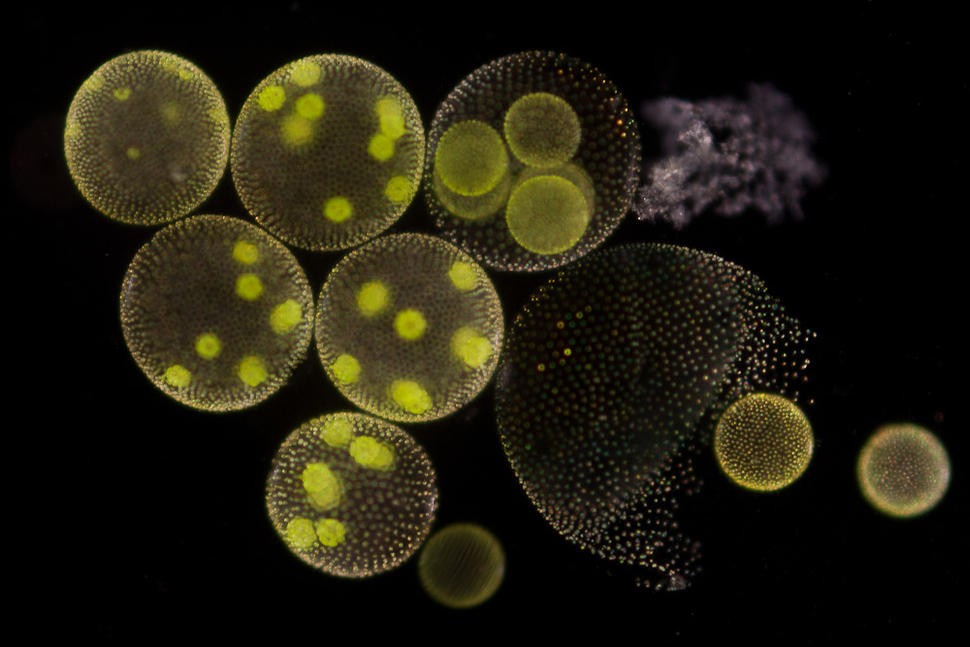Volvox algae colonies: from simple to multicellular cooperative systems in nature
Not much time has passed from the two-week sustainable urban design workshop in Amsterdam in which I participated as a member of the Swat/Building Technology course. Having been assigned with the sustainable redevelopment of one of the most problematic areas in Nieuw West, we came across two opposite design processes that claim the forefront in the transition era towards sustainability.
The approved plans for the revitalization of this currently dull and empty of activities area, included the demolition of existing low scale buildings and the erection of huge monolithic complexes which would incorporate several different uses: accommodation, student housing, hotel, parking spaces etc. Although already approved by the municipality of Amsterdam, would this still be the right direction to follow?
Cost, materials and energy savings are the two arguments coming first in our minds in favor of reusing the existing building stock rather than erecting new huge structures. However, there are many more. Think of tomorrow’s society. Everything is rapidly changing. People are looking for new versatile solutions in every aspect of their life. We are renting places from Airbnb, we are calling an Uber instead of a taxi, we want to charge our phones and our laptops at public spaces and in general we want to have as many options as possible. Nothing is permanent and solid anymore. Yet, most of the buildings we live in are permanent once they are built. This linear and irreversible process of planning and intervening does not fulfill the ever-changing demands of modern society anymore; replacing the old built environment with a brand new permanent one is definitely not serving the way socio-technical systems are working and being developed today.
The answer lies on a circular design process: simple, small and flexible interventions, with low energy footprint, constructive effort and material use, which can be easily altered, adjusted or even removed after their implementation, depending on their performance and effectiveness. Their efficiency as design decisions can be assessed through a feedback loop, based on their expected and final effect on their urban context. A step by step addition of elements and simple systems can therefore lead to solving high complexity problems.
“Grow by chunking”, one of the nine laws that according to Kevin Kelly can operate systems as diverse as biological evolution, describes the exact same simplicity-driven principle: “The only way to make a complex system that works is to begin with a simple system that works. […]Time is needed to let each part test itself against all the others. Complexity is created, then, by assembling it incrementally from simple modules that can operate independently.”1
Besides, simplicity and adaptability are two principles which our whole biological existence and evolution has been built upon. Despite the rapid technization of our world, they should continue to be the prime infrastructure in every aspect of human activity.
[1] Kelly, K. (1995). Out of control: the new biology of machines, social systems and the economic world. Basic Books, pg. 469
